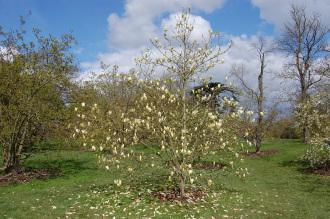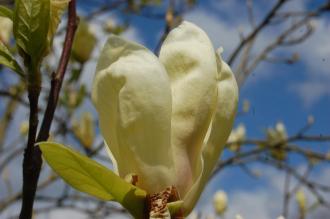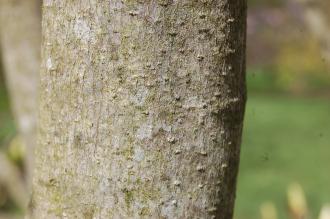
Magnolia ‘Yellow Lantern’ (23/04/2016, Kew Gardens, London)
Position: Full sun to partial shade
Flowering period: Mid to late spring
Soil: Moist, well drained
Eventual Height: 8m
Eventual Spread: 5m
Hardiness: 6b, 7a, 7b, 8a, 8b, 9a, 9b
Family: Magnoliaceae
Magnolia ‘Yellow Lantern’ is a deciduous large shrub or small tree with a conical, upright habit. Its mid green leaves are elliptic with entire margins, up to 20cm long and 8cm broad. Its leaves are bronze coloured when they emerge with its flowers in spring. Its bark is quite smooth and gray. Its lemon yellow flowers emerge from large buds and when open are cup shape and up to 12cm long.

Magnolia ‘Yellow Lantern’ Flower (23/04/2016, Kew Gardens, London)
Magnolia ‘Yellow Lantern’, commonly known as Magnolia Yellow Lantern, is a cross between Magnolia acuminata var subcordata and Magnolia x soulangeana ‘Alexandrina’.
The etymological root of the binomial name Magnolia was named after Pierre Magnol, a 17th century French botanist.
The landscape architect may find Magnolia ‘Yellow Lantern’ useful as a spring flowering specimen large shrub/ small tree. It prefers a sheltered location.

Magnolia ‘Yellow Lantern’ Bark (23/04/2016, Kew Gardens, London)
Ecologically, Magnolia ‘Yellow Lantern’ flowers are attractive to some pollinating insects. Its fruit are attractive to some birds.
The Royal Horticultural Society has given Magnolia ‘Yellow Lantern’ their prestigious Award of Garden Merit in 2012.
Magnolia ‘Yellow Lantern’ prefers moist, humus rich, fertile, well-drained soils. It prefers a neutral to acidic pH of soil.
Magnolia ‘Yellow Lantern’ requires little maintenance. Pruning, if required, should be carried out in midsummer.

Landscape Architecture

